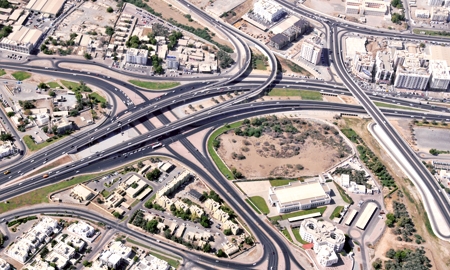For a country that as recently as 40 years ago had only about 620 miles of mostly unpaved roads, Oman has over the intervening years taken enormous strides to expand and improve its national transportation infrastructure.
The country of 2.9 million people in the lower right-hand corner of the Arabian Peninsula now boasts about 18,500 miles of roads, about 8,000 of which are asphalted, and is preparing to invest billions of dollars in coming years to add hundreds more miles of roadways, and to widen and improve hundreds of miles of existing highways.
Oman’s government is planning to spend about RO3 billion ($7.8 billion) on road projects through the end of 2013 alone. A big part of that money will be dedicated to the project to build the 165-mile, eight-lane Batinah expressway, which when finished will be the widest highway in the country.
Another huge project is the widening and lengthening of the currently 444-mile road linking Oman’s capital city of Muscat and the southern city of Salalah. The road will go from being an undivided, one lane road to a highway with two lanes in each direction. The government also plans to spend about RO500 million on projects to ease traffic problems within the city of Muscat.
These upcoming projects, along with recently finished roads such as the 34-mile Muscat Expressway, all have the dual goals of improving the flow of road traffic around the country and making Oman’s rapidly expanding road and highway network safer.
Investment on new or wider roads is growing, but the government is also improving existing roads, adding flyovers and underpasses, building new interchanges and re-aligning highways and other roads to help reduce the number of accidents.
Oman and its partners in the Gulf Cooperation Council, are also looking beyond road transportation and are planning to build a railway system more than 1,200-miles-long linking them all together. Construction on the GCC railway could start as soon as 2014, and it could start operations as early as 2017.
The railroad, as currently planned, will begin near Kuwait’s border with Iraq, pass south along the Arabian Peninsula coast of the Arabian Gulf through Saudi Arabia, Bahrain and Qatar, then turn east to pass through the United Arab Emirates and then turn south again to enter Oman. An extension through Oman to its border with Yemen is also being considered.
Aside from railways, Oman and its neighbours are also linking up by asphalt. “We are putting a lot of effort in having roads that connect us with neighbouring countries,” said
Dr Ahmed Mohammed Al Futaisi, Minister of Transport and Communications.
All these ground linkages represent a huge step forward for the region’s people and economies. As Al Futaisi said, “It’s going to be a new era in our transportation sector.”

0 COMMENTS